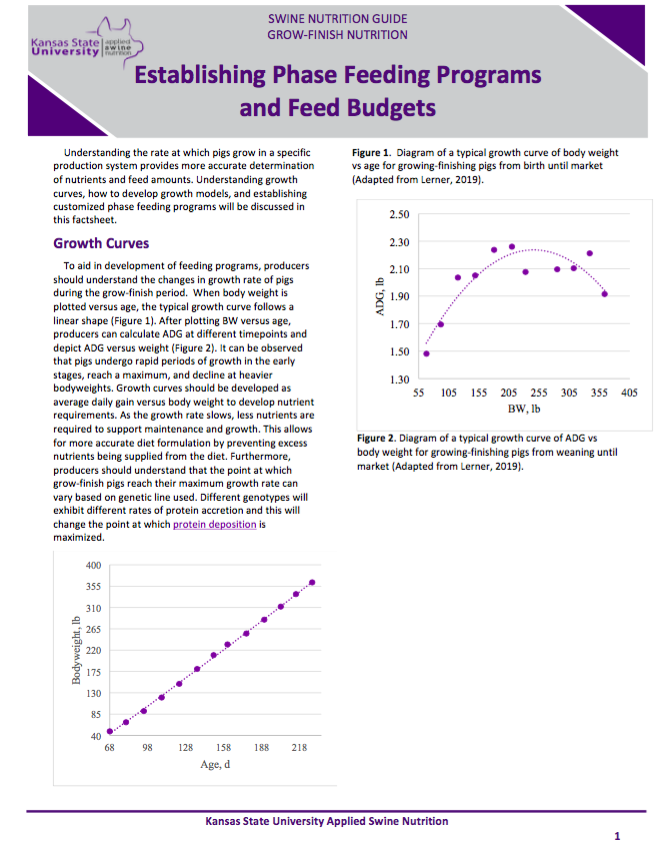Growth and Feed Intake Curve Model and Development
Development of grow-finish growth models can be achieved by either using reference modelling equations provided from sources such as the NRC (2012) or using farm-specific data. Both methods can be used in an effort to understand the nutrient requirements of grow-finish pigs at varying stages of production. Knowing these nutrient requirements will allow for customization of feed budgets for individual farms and estimate the optimal marketing weight to optimize economic success.
The first step in developing growth models to predict performance is to correctly quantify farm specific model inputs needed to develop these models (de Lange et al., 2001). The specific model inputs needed are dependent on whether a reference equation is utilized to generate growth curves or a farm specific growth curve is developed. If a reference equation is utilized, the model inputs needed are mature bodyweight, growth rate, age at maximum growth rate, energy intake and energy required for maintenance (NRC 2012, Rostagno, 2017). Although these reference equations are accurate in predicting growth rate, these equations were developed under ideal growing conditions and may not best represent farm specific growth rates.
Inputs for the reference equations required for these models may not be available in production systems. Thus, production systems may want to develop their own specific growth model. This allows for the accurate determination of the upper limit to protein deposition (Pdmax) for a specific farm. Accurate determination of PDmax is important as it aids in estimating the amino acids required for actual protein deposition being achieved. Growth and tissue accretion curves can be developed that are specific to a production system through serial scanning (Smith et al., 1999;). From these scanning methods, tissue accretion and growth curves can be developed that allow producers to determine nutrient requirements at different stages of the grow-finishing period.
Once daily nutrient requirements are determined from acquired protein deposition curves and a relationship is established between energy intake and protein deposition, estimates of feed intake should be determined. It is important to accurately estimate feed intake as this will determine the optimal level of dietary nutrients needed to support observed growth rates. If body protein, lipid rates, and maintenance energy are known inputs, reference equations are available from the NRC (2012) to determine daily energy to support observed growth rates. If these inputs are unavailable, production systems can develop their own actual growth and feed intake curves. To develop these curves, 3 to 4 pigs of each gender from at least 6 different pens must be weighed at least 5 different timepoints throughout the grow-finish period. At each of these timepoints, feed disappearance is measured. Average daily feed intake is then calculated between these different timepoints and plotted against bodyweight to determine actual feed intake. This actual feed intake curve can be compared to reference intake curves to understand where nutritional or management practices can be improved to optimize growth (de Lange et al., 2001).
Once growth and feed intake curves are established, a phase feeding program can be developed based on the various weight ranges and growth rates to provide adequate nutrients for protein deposition and minimize excessive lipid deposition.
